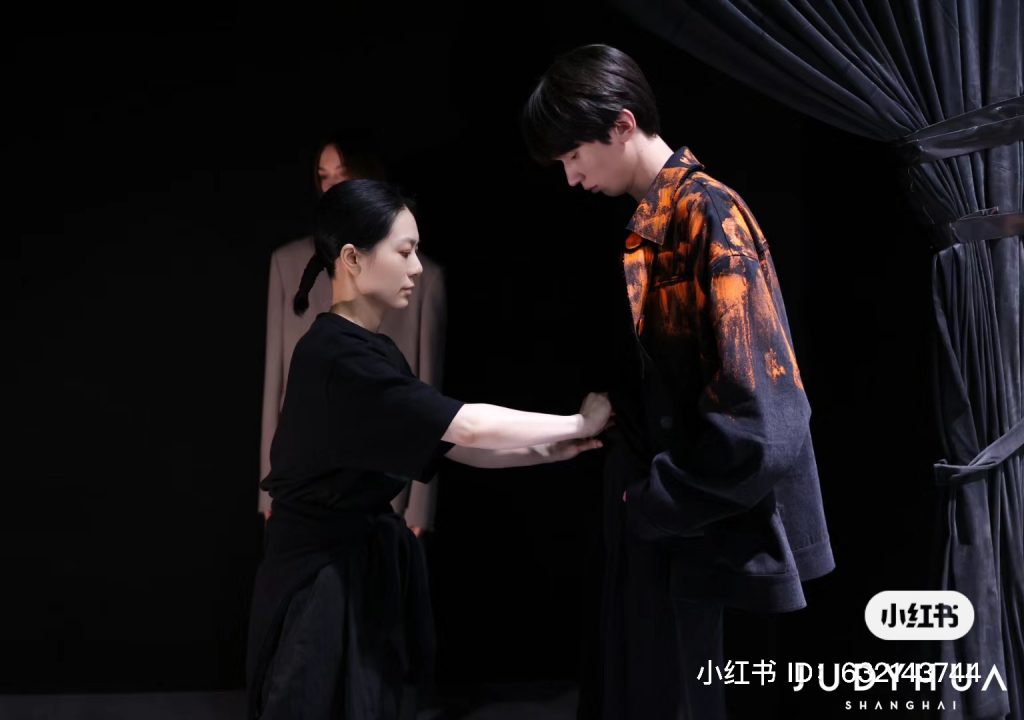On December 7, the Metropolitan Museum of Art’s Costume Institute will open its Women Dressing Women exhibition. Celebrating a century of over 70 female womenswear designers ranging from Jeanne Lanvin to Simone Rocha, the exhibition feels especially necessary in this current moment of fashion. And it’s not hard to see why.
Just a look at the major runways in Paris, Milan, and London this past season, and you’d be hard-pressed to find many “women dressing women” these days. Instead, the majority of creative directors at the helm of top womenswear brands are, in fact, men. And recent appointments have only served to widen the gender gap.
The announcement of Seán McGirr to succeed Sarah Burton at Alexander McQueen this year caused quite a stir, as critics remarked that all six of Kering’s fashion brands are now led by white men.
“I literally don’t know a single woman of my generation even approached for a job like this,” a designer told fashion platform 1 Granary in a viral Instagram post on the homogeneity of Kering’s creative leadership.
Things aren’t much different at Kering’s rival conglomerate, LVMH.
Just two of the womenswear divisions of their fashion maisons are led by women: Maria Grazia Chiuri at Dior and Camille Miceli, who joined Pucci in 2021. And this week, Moschino announced Jeremy Scott’s highly anticipated successor would be Gucci alum Davide Renne.
It’s a notable shift given how consumers are more attuned to luxury fashion brands’ inclusivity measures — or lack thereof.
Led by patriarchy in a time of diversity, equality and inclusivity
2020 propelled many fashion brands to make diversity and inclusion pledges. However, just three years later, the industry has not only swung back to the status quo but has become even more male-dominated than a century ago.
“Paradoxically, women seem to have lost the position they had in the early days of fashion,” says Barbara Franchin, founder of the International Talent Support (ITS) design competition. “Schiaparelli, Lanvin, Chanel (still designed and run by women today), Madame Grès, and Vionnet dictated the rules of taste and business, even though they certainly didn’t have it easy.”
Many of the houses that make up the Kering and LVMH portfolios, like Saint Laurent, Dior and Givenchy, were named for and founded by men. But as Franchin notes, even those founded by women have largely passed into the hands of male designers; Schiaparelli, founded in 1927 by Elsa Schiaparelli, went through various male creative directors in the 2010s before finding a more permanent steward in Daniel Roseberry in 2019.
Lanvin, the oldest French fashion house in continuous operation since its founding by Jeanne Lanvin in 1889, saw a brief stint under a female creative director with Bouchra Jarrar from 2016 to 2017. But the brand has otherwise been under the creative direction of men like the late, beloved Alber Elbaz and Bruno Sialelli, who departed earlier this year.
Meanwhile, the Ann Demeulemeester label went through an abrupt change of hands this year when Stefano Gallici took over as creative director after the short tenure of Ludovic de Saint Sernin.
Fashion students are primarily female
And yet the fashion industry is in no shortage of female talent.
One article reveals that over 85 percent of graduating majors from top fashion schools are female, and one in six workers in the fashion industry globally identifies as female. But as of 2018, only around 14 percent of the top 50 major fashion brands are run by women.
Franchin notes that just over half of the applicants to the ITS Contest, a competition for discovering emerging creative talent, are women, with 58 percent of winners over the contest’s past 20 years being women designers. But that doesn’t always lead to more opportunities.
“When I look at how many major house creative directors we can count from our former finalists and winners, I see notable examples from the men (we have three at the moment), but I am missing significant appointments among female designers,” she says.
In contrast to the European runways, however, 68 percent of 25 major brands we tracked showing at this season’s Shanghai fashion week, which ran from October 8 to 16, were led by women designers. This included local talent like Judy Hua’s Judyhua, ZI II CI IEN by Zhi Chen and Chundie Zhu’s namesake label.

Judy Hua presented her Spring/Summer 2024 collection at Shanghai Fashion Week. Photo: Judyhua
Foreign female-led brands like Stella McCartney and Selkie, the New York label founded by Kimberley Gordon, also made an appearance on the schedule this year. Selkie has earned particular praise not just for its fanciful dresses but also for its inclusive runway during September’s New York Fashion Week, featuring models of various skin tones, abilities and sizes. McCartney is a well known champion of sustainability at her brands.
One of the most recent high-profile fashion appointments is the exception that proves the rule. Following the departure of Gabriela Hearst, Chloé announced in October that Chemena Kamali would take over as creative director. Founded by Gaby Aghion in 1952, the French fashion label has been led by almost exclusively women creative directors, such as Stella McCartney, Phoebe Philo, and Clare Waight Keller (the one exception is Karl Lagerfeld, who led the house from 1992 to 1997).
The highly anticipated return of Philo to fashion with a namesake label ought to support a fairly obvious truth in fashion: women know what women want to wear.
And Philo is not alone. Miu Miu, under the creative direction of founder Miuccia Prada, was recently named Lyst’s hottest brand of the third quarter of 2023. Yet, fashion leaders are increasingly resistant to giving women creative control of their own clothes.
In founding her own label, Philo joins the ranks of women like McCartney, Rei Kawakubo and Simone Rocha who, rather than wait for a big appointment, will simply create their own brand.
